The 1947 Fire
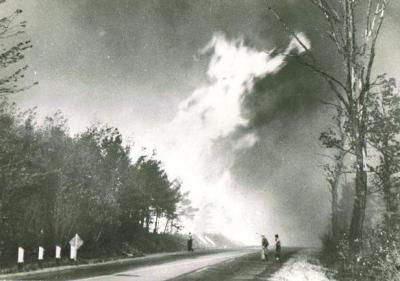
In this famous photograph, AP news photographer Ted Dyer captured the moment when the 1947 fire crossed Route 1 in Arundel and began its path of destruction through Kennebunkport and Biddeford.
In October of 1947, Kennebunkport suffered the worst disaster in its history. A woods fire, fueled by high winds, a build up of debris in the forest and extremely dry conditions, turned into a raging wildfire and swept the town, destroying over 200 houses and changing our community forever.
The fire began in Arundel, and it burned to the ocean at both ends of Goose Rocks Beach, down Mills Road to the edge of Cape Porpoise village and over Crow Hill into the Wildes District. The destruction of the Kennebunkport village was prevented only by changing weather conditions, the bulldozing of a fire break between School Street and Wildes District Road, and the efforts of thousands of firefighters that converged on the area from throughout New England. The same fire also destroyed a large area of Biddeford, including all but six houses at Fortunes Rocks, and for a time threatened the city itself. About half of the total land area of the two towns was burned over. At one time, the fire burned in an unbroken front that was over eight miles long.

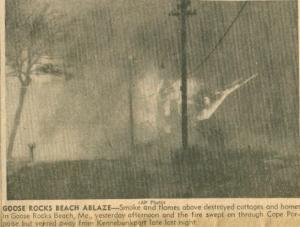 The Boston Herald ran another Ted Dyer photo on its front page for Oct 22, 1947. It showed waterfront cottages along the East end of Kings Highway at Goose Rocks Beach being destroyed by a wall of flame.
The Boston Herald ran another Ted Dyer photo on its front page for Oct 22, 1947. It showed waterfront cottages along the East end of Kings Highway at Goose Rocks Beach being destroyed by a wall of flame.
The fire, which became known as the "Kennebunkport Fire", was one of many that occurred simultaneously in Maine. Other York County towns, including Newfield, Shapleigh, Waterboro, Alfred, and Lyman also suffered enormous losses. To the north, Bar Harbor and Acadia National Park were threatened with destruction.
Local historian Joyce Butler tells the story of the fires in her remarkable book Wildfire Loose, The Week Maine Burned. The book has been reprinted many times and is still available from most booksellers.
The 1947 Fire called attention to the need to modernize Kennebunkport's fire fighting capabilities. The Kittredge family led a fundraising effort that purchased 4 new trucks, hose and other equipment. Shortly thereafter, Kennebunkport became one of the first small towns in the nation to implement a two-way radio system to alert firefighters and provide communications between stations and apparatus. Since then, several generations of firefighters have dealt swiftly with any forest fire threat to our community.
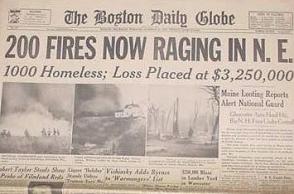
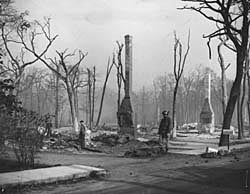
The 1947 Fire dominated the news throughout New England.
The Boston Globe ran a front page photo of the National Guard patrolling Goose Rocks Beach to prevent looting.
Today, the Kennebunkport Fire Department is far more prepared for a major woods fire. Each of the stations maintain an off-road brush truck equipped with water, foam, portable pumps, and forestry tools. We train each year in woods fire operations and mount a sizable response to any reported brush fire. A system of nearly 80 "dry" fire hydrants has been established in ponds and streams throughout the more rural parts of town, and our new fire tanker can deliver 3500 gallons of water to a reported fire in minutes. Should Kennebunkport ever again be threatened by wildfire, we have learned some valuable lessons from the 1947 Fire.
Dick Stedman, Administrator
Kennebunkport Fire Department
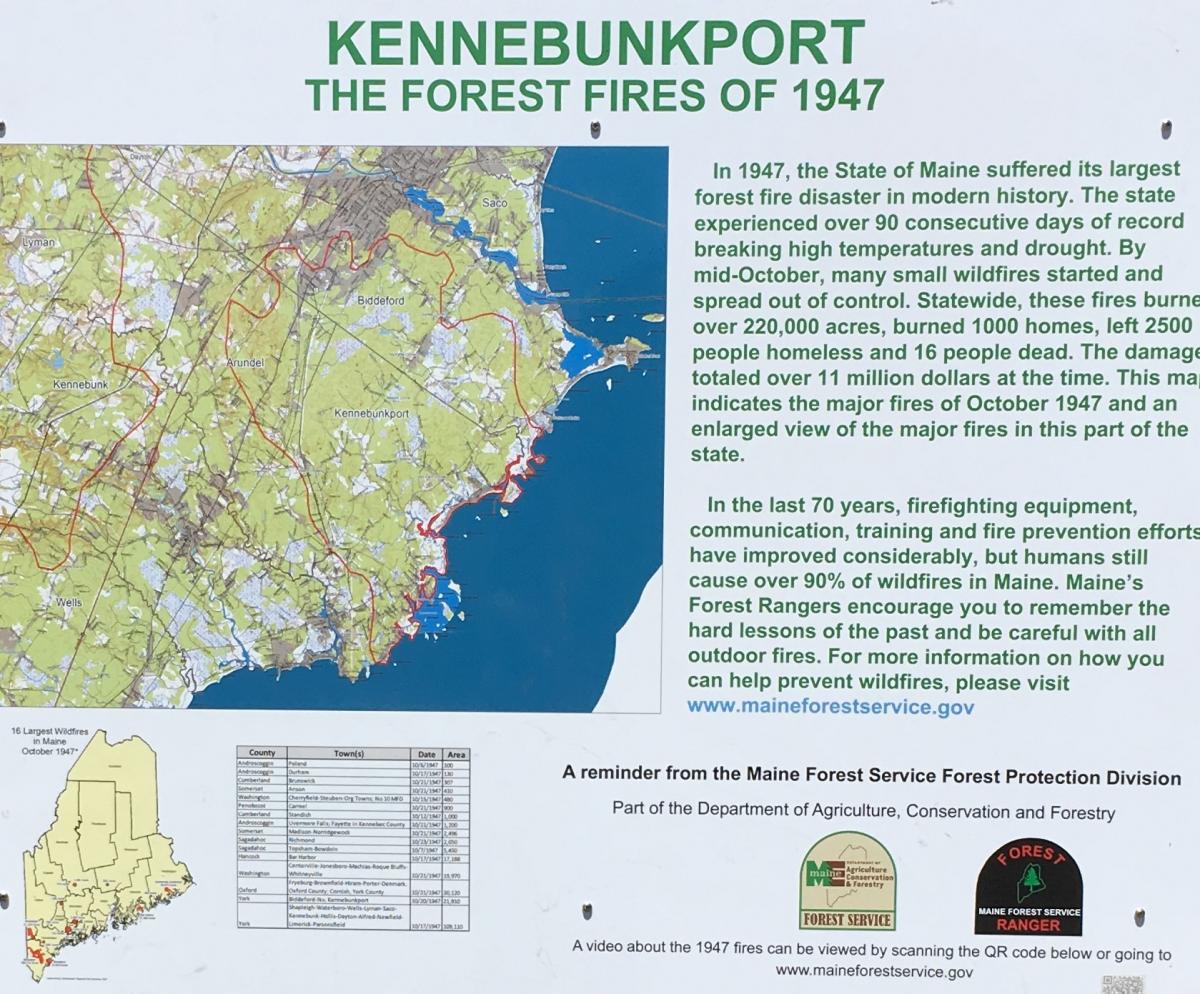
The Maine Forest Service provided commemorative signs to communities throughout Maine that suffered in the 1947 fires.

